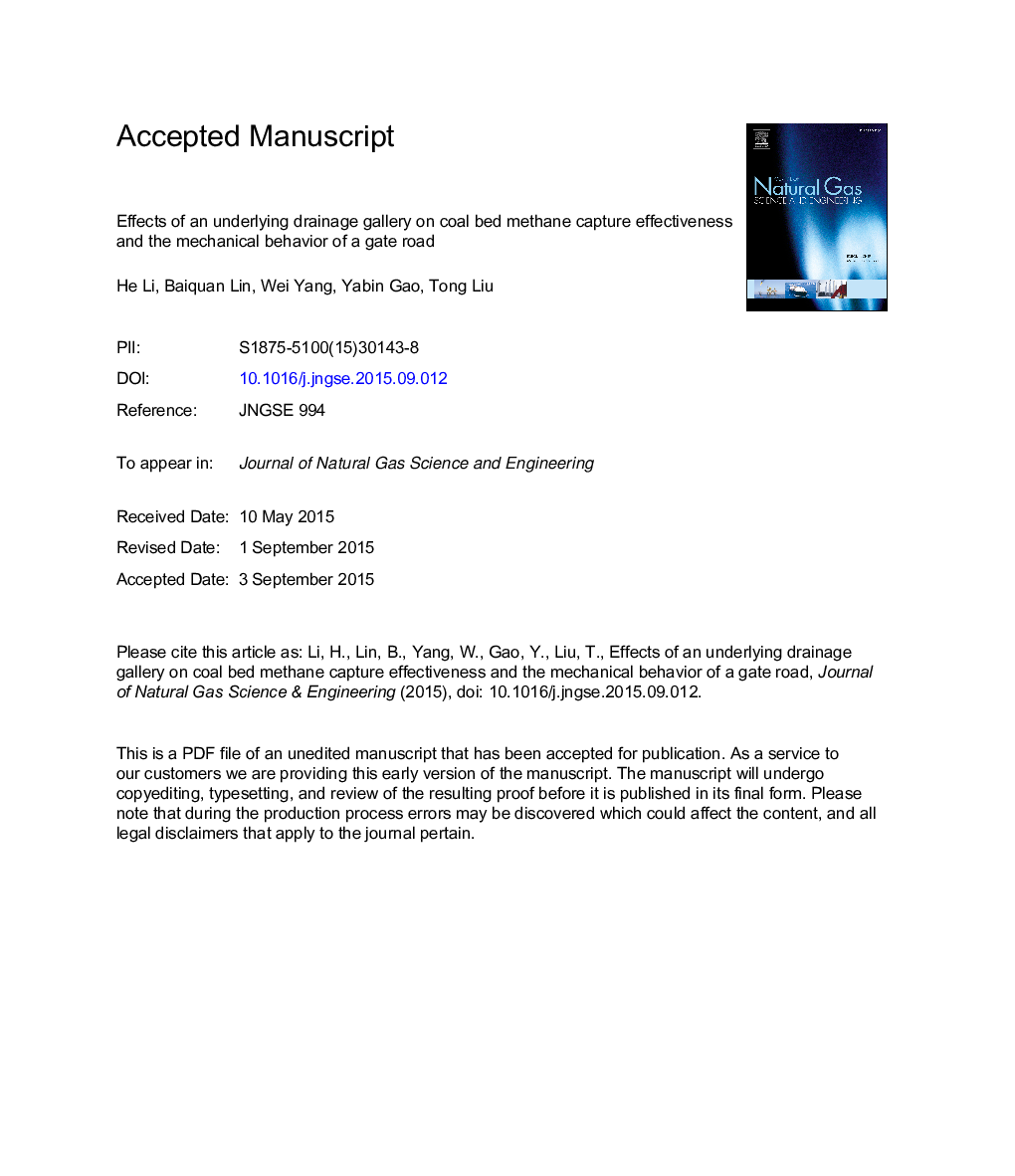| Article ID | Journal | Published Year | Pages | File Type |
|---|---|---|---|---|
| 1757611 | Journal of Natural Gas Science and Engineering | 2015 | 43 Pages |
Abstract
Degassing of a coal bed via cross-measure boreholes from an underlying drainage gallery (UDG) is a reliable method for safeguarding a gate road against gas outbursts. Predicting the influence of the UDG on the gate road plays a key role in the optimal design of roadways to ensure safe excavation, support, and maintenance. In this paper, numerical simulations were conducted to assess the effects of in situ stress and the roadway layout on coal bed methane capture effectiveness and the mechanical behavior of a gate road. The results indicate that the influence of the UDG on the gate road increases as the angle between the major horizontal stress and the gate road is increased or when roadway separation is decreased. After excavating the UDG, the permeability distribution across the coal bed can be divided into distinct zones. The gate road should correspond as closely as possible to the high permeability zone that develops in the rib area of the UDG, and permeability enhancement measures should be implemented in the low permeability zone. Staggering the roadways can prevent stress concentrations during the excavation of the gate road, but staggered roadways exhibit asymmetric distributions of plasticity and deformation. Therefore, roadway support in cases of staggered roadways should be biased toward the sidewall close to the adjacent excavation. These results provide important insights for layout planning and efficiency maximization of the UDG. Field test results matched well with the simulations.
Related Topics
Physical Sciences and Engineering
Earth and Planetary Sciences
Earth and Planetary Sciences (General)
Authors
He Li, Baiquan Lin, Wei Yang, Yabin Gao, Tong Liu,
